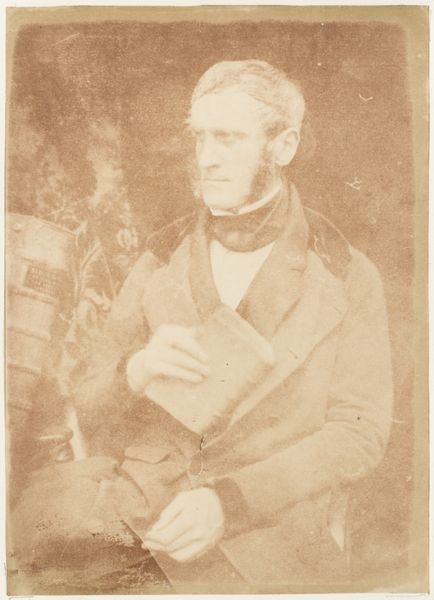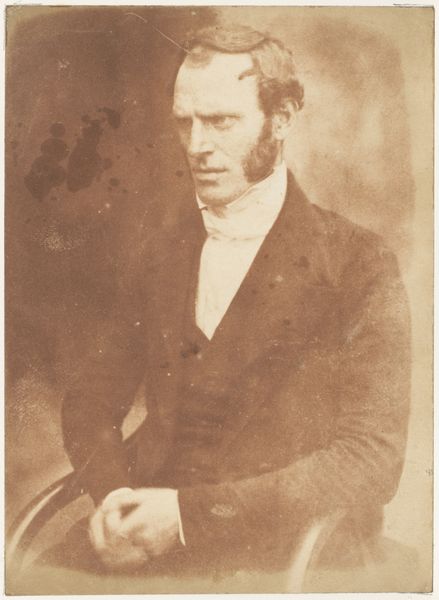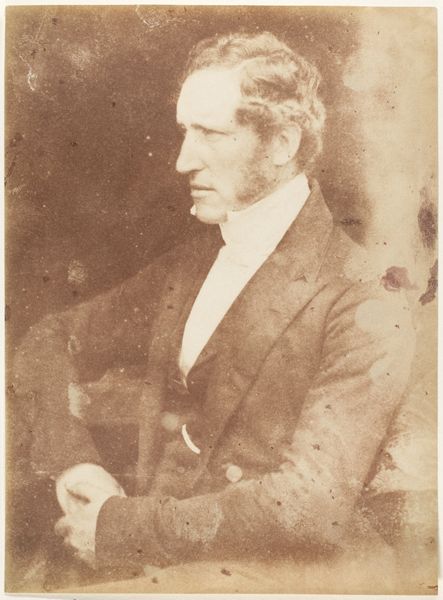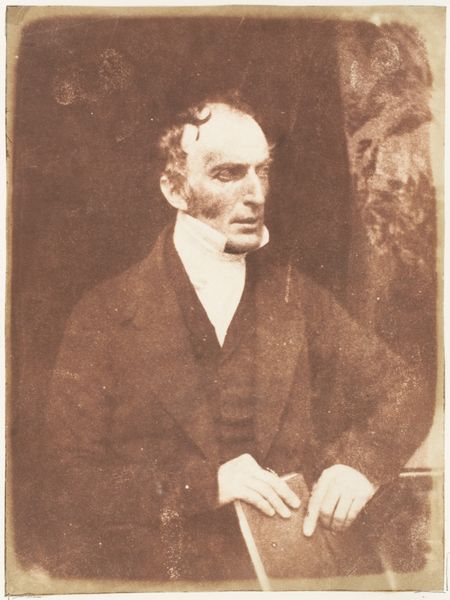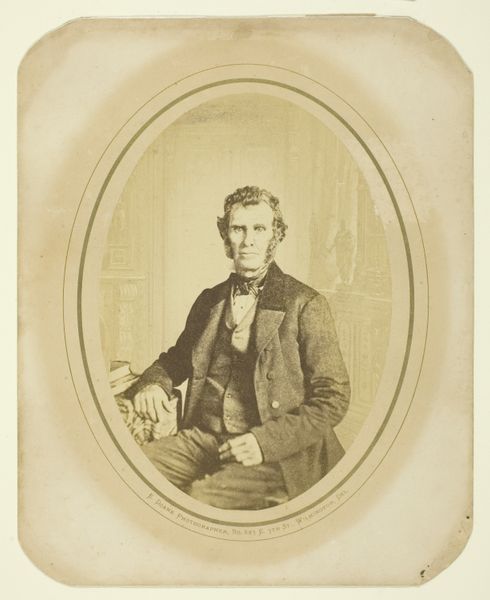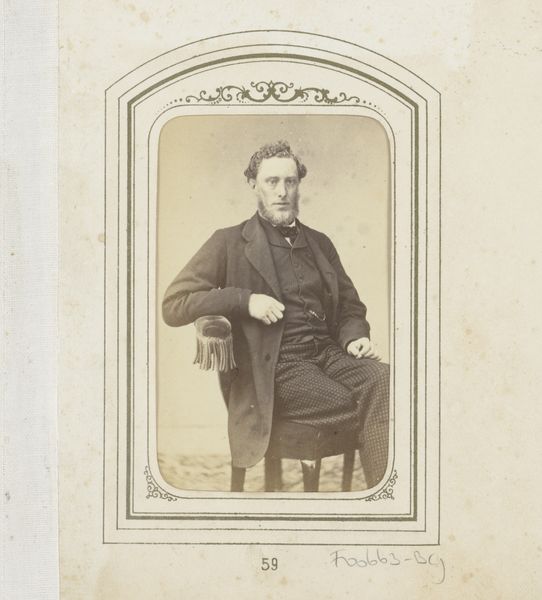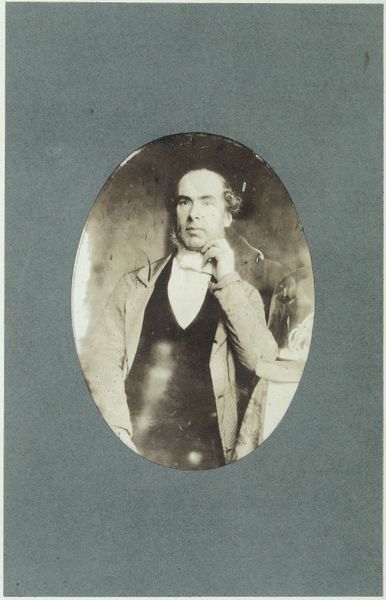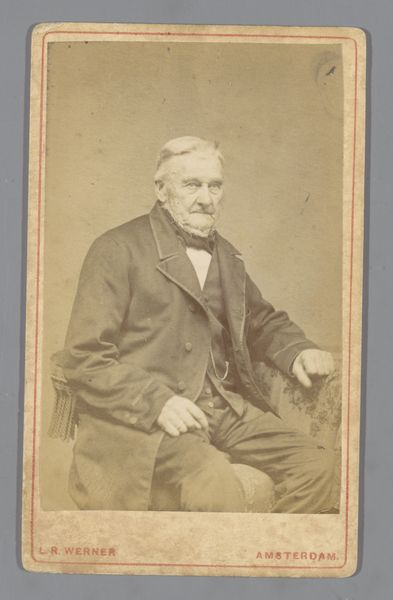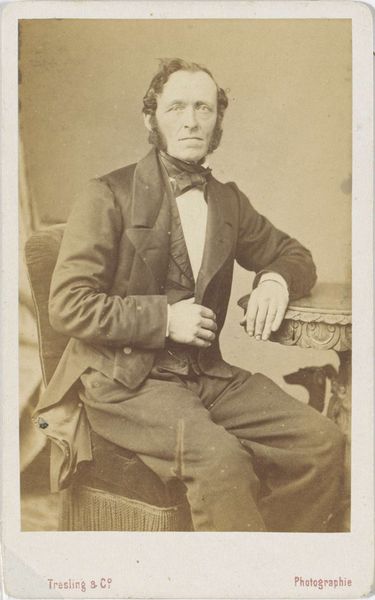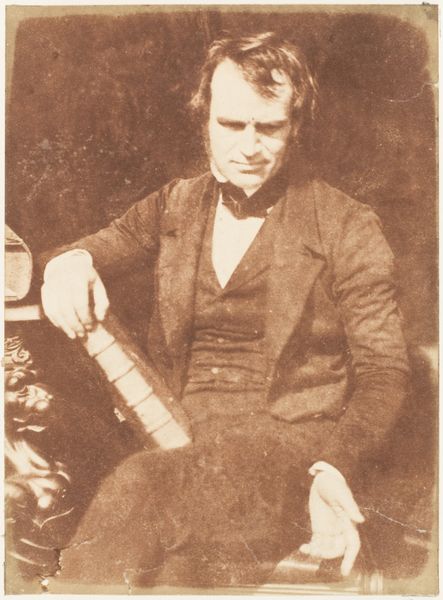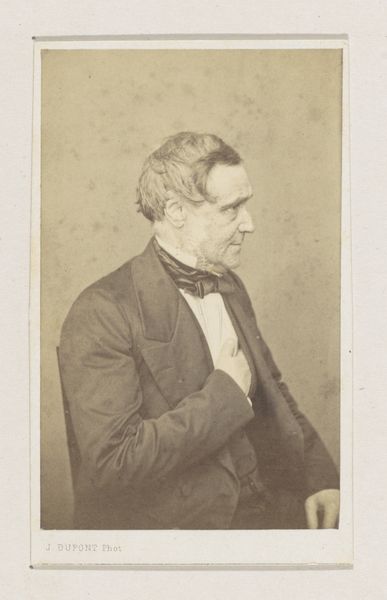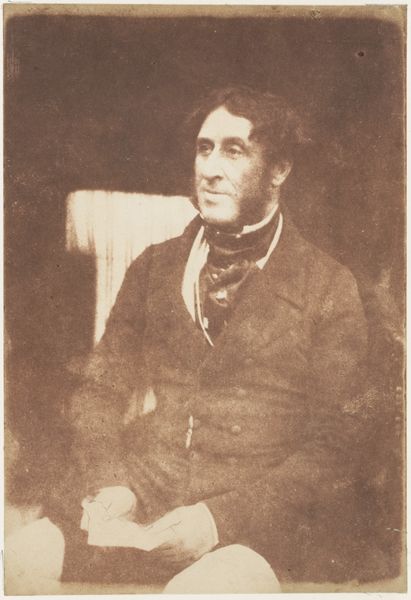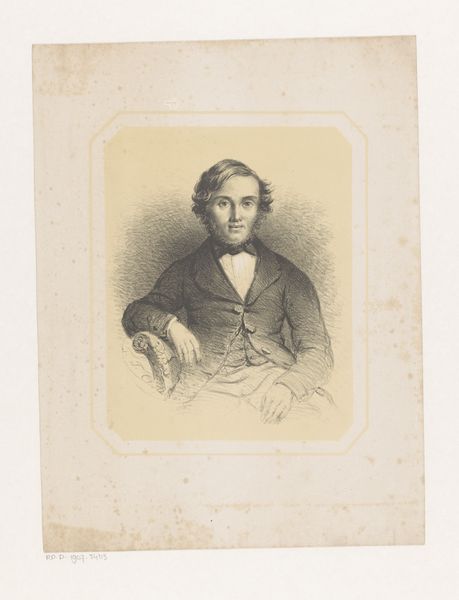![[Man] by Hill and Adamson](/_next/image?url=https%3A%2F%2Fd2w8kbdekdi1gv.cloudfront.net%2FeyJidWNrZXQiOiAiYXJ0ZXJhLWltYWdlcy1idWNrZXQiLCAia2V5IjogImFydHdvcmtzL2E5ZGRhZDkyLThjNzktNGYxMS04MmFkLWE2NmEwNmI2N2Y4ZC9hOWRkYWQ5Mi04Yzc5LTRmMTEtODJhZC1hNjZhMDZiNjdmOGRfZnVsbC5qcGciLCAiZWRpdHMiOiB7InJlc2l6ZSI6IHsid2lkdGgiOiAxOTIwLCAiaGVpZ2h0IjogMTkyMCwgImZpdCI6ICJpbnNpZGUifX19&w=3840&q=75)
photography, albumen-print
#
portrait
#
figuration
#
photography
#
romanticism
#
albumen-print
#
realism
Copyright: Public Domain
Editor: This albumen print, simply titled "[Man]," was created sometime between 1843 and 1847 by Hill and Adamson. There's an immediate somberness, a seriousness that the sepia tone reinforces. How do you interpret this work within the social context of early photography? Curator: I think it's vital to view this portrait as a challenge to the prevailing notions of representation and power during that time. Early photography democratized portraiture, but who was really being represented? Consider the sitter’s gaze: he doesn't necessarily meet ours directly. Does this choice by Hill and Adamson subtly question the dominant, often idealized, portraits of the elite? Is it possible they are subtly hinting at the subject's socio-economic status? Editor: That's fascinating. So, you're suggesting the image, while seemingly straightforward, might be making a subtle statement about class? Curator: Precisely. Furthermore, think about the role of photography itself during this period. It offered the opportunity for a more “realistic” rendering compared to painting. How does this affect our perception of identity when considering someone’s photograph, knowing that photography at this time took considerable patience from its subjects? How might posing for such portraits have contributed to a sense of self? How might the power dynamic change? Editor: It's really amazing to think that a seemingly simple portrait can be such a rich source for exploring questions about representation, identity, and social class. Curator: Absolutely! And that’s precisely what makes engaging with art so meaningful. It becomes a catalyst for examining power, historical conditions, and subjectivity, enriching the current discussion surrounding photography today.
Comments
No comments
Be the first to comment and join the conversation on the ultimate creative platform.
